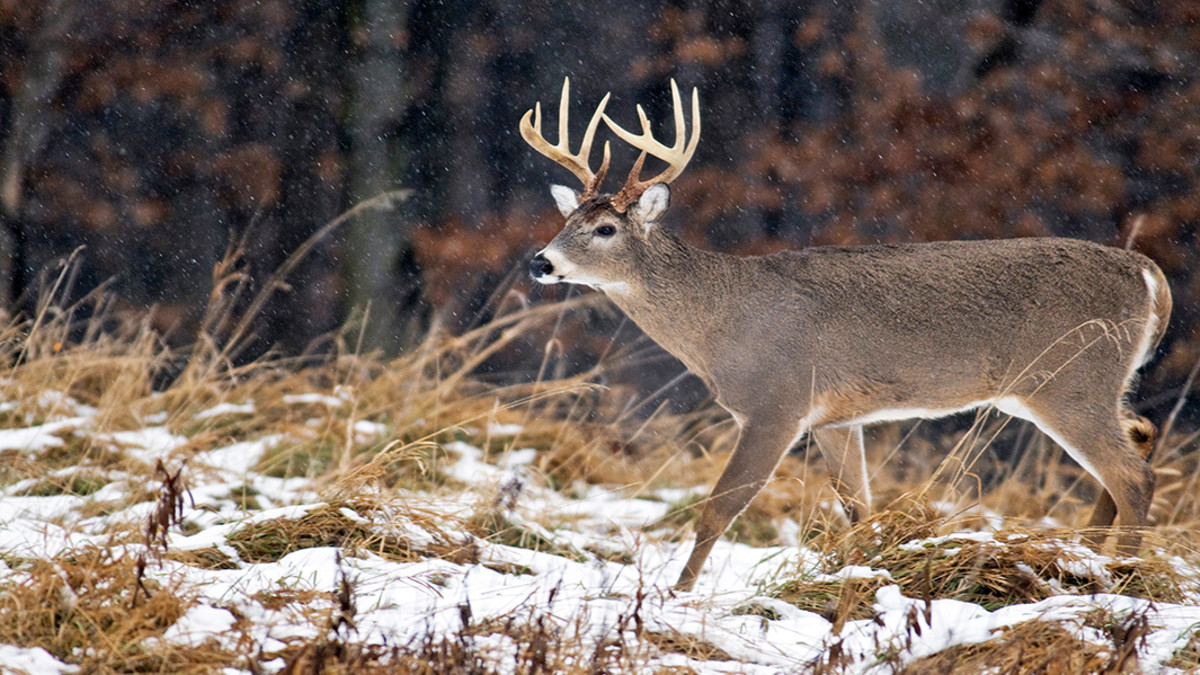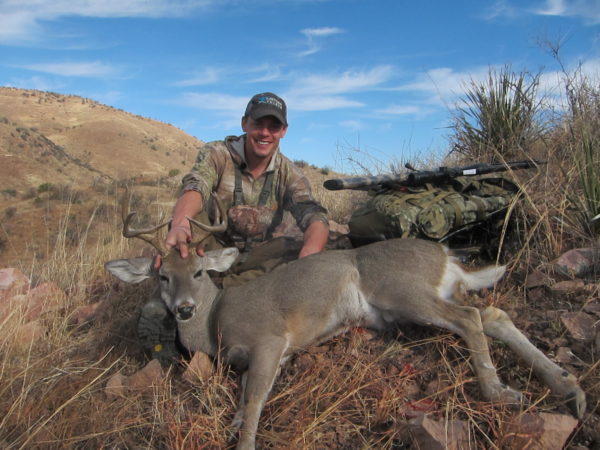
Whitetails are America’s deer. Over 30 million inhabit the US with a total of 45 states having whitetail deer seasons. Every year American hunters kill approximately 6 million deer and consume roughly 300 million pounds of venison.
Along with deer meat, we devour an encyclopedic amount of literature on the subject. For one human to try and read everything written on whitetails in a single year would be a fool’s errand, it’s a rich field of inquiry with literally thousands of living experts.
A quick internet search will uncover a dozen or more whitetail specific magazines, as well as dozens of whitetail TV shows and many other media enterprises that cover the topic of whitetails within a broader hunting context. However, the bulk of these resources focus on information about hunting trophy-sized bucks. The following overview on whitetail hunting is meant to help a prospective whitetail hunter get up and running and to fill his freezer.
Scientific Name
Odocoileus virginianus
A.K.A.
White-tailed deer
Bar Room Banter
According to the esteemed biologist Valerius Geist, whitetail deer have been in existence for somewhere around 4 to 6 million years. For the greater part of that period, whitetails scraped by, eeking out an existence among many specialized herbivores and predators in an area centered around the southeastern United States.
Their big break came about 10,000 years ago, when many of North America’s giant mammals went extinct. With much less competition and fewer predators, the whitetail flourished. With the disappearance of America’s giant herbivores, plant communities became larger, more uniform, and susceptible to wildfire. Wildfires cleaned out mature vegetation, creating vast food sources for the whitetail deer. Just as now, the whitetails of 10,000 years ago were opportunists of the highest degree. They used this dramatic change of the landscape to multiply and expand their range across much of North America.
Physical Characteristics
Reddish brown in summer, grayish brown in winter. Males have antlers with one main beam and unbranched tines. The tail is brown with a white underside. At the shoulder, whitetails stand 21-47 inches. Males, or bucks, average 140-300 pounds. Does average 90-180 pounds.
Habitat
Common to deciduous forests, the whitetail has adapted to open prairies of the West as well as semi-arid grasslands of the southwest. Equally at home in wilderness, suburbs, and farmlands.
Telltale Sign
Rubs, scrapes, trails, beds.
Diet
The whitetail’s adaptive quality extends to its diet. Depending on geographic location and seasonal availability, it consumes many different varieties of grasses, forbs, mast, fruit, fungi, and woody browse materials — basically everything from corn to cactus.
Life and Death
Wolves and mountains lions are major whitetail predators, capable of killing even healthy adults. Coyotes, bobcats, black bears, and several other mid-size predators will readily kill the fawns and, on occasion, adults as well. The typical life expectancy of a whitetail deer is 7-10 years.
Breeding and Reproduction
Breeding occurs late October to mid-December. Breeding activity peaks in mid-November in northern states; in southern states, it peaks in January. Fawns are usually born from mid-May to early June.
Edibility
Flavor varies depending on diet and location, becoming milder and fattier its proximity to intensive agriculture. Great for any red meat application.
Hunting Opportunities
Aside from a few states that manage their whitetail bucks for extreme trophy potential, whitetail hunting in generally wide open to both residents and nonresidents in the bulk of whitetail states. Tags can be purchased over-the-counter or online for just about all of the available seasons and methods of take. Most states allow the harvest of multiple animals; in some states, you’re allowed a deer per day during whitetail seasons that last a month or more.
The Grey Ghost
Named after Dr. Elliot Coues, a surgeon and renowned naturalist, the Coues deer are a desert-dwelling subspecies of the whitetail deer that ranges from the mountains of northern Mexico up into Arizona and portions of New Mexico. Coues deer are small, with bucks averaging only around 100 pounds, and they are highly elusive.
They evade their many predators by hiding in the oftentimes thick brush and rarely venturing outside of their narrowly defined home ranges. The main challenge to hunting Coues deer is finding one. But even then, they have an incredible knack for disappearing into thin air. Any hunter who chooses to chase these shy deer will understand why they are commonly referred to as gray ghosts.
Arizona has the bulk of the Coues deer hunting opportunities in the U.S. Although all Coues tags must be applied for through Arizona’s annual lottery, leftover tags are usually available in the more remote parts of the state, particularly near the Mexican border. The southwest corner of New Mexico also harbors Coues deer, though not as many as Arizona.
By far the greatest populations of these deer can be found south of the border in Mexico. There, with the help of an outfitter, you can experience a Coues hunt without the hassle of tag applications. And because you’ll be hunting private land in Mexico, hunting pressure is virtually nonexistent.









Conversation